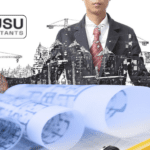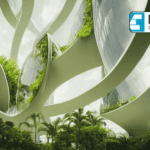Beyond Concrete and Steel: New Materials in Structural Design Engineering
Introduction
The field of structural design engineering is in the midst of a transformative revolution. Traditionally reliant on concrete and steel, engineers are now exploring an array of innovative materials that are reshaping the way we build and design structures. In this article, we venture into the fascinating world of new materials in structural design engineering and how they are changing the way we create the infrastructure of the future.
Diverse Materials Landscape
While concrete and steel remain integral to construction, a growing awareness of environmental sustainability, resource scarcity, and the need for more durable and resilient structures has prompted engineers to seek alternatives. New materials are emerging as viable options for various applications, promising benefits that extend beyond the status quo.
1. **High-Performance Concrete:**
Beyond traditional concrete, high-performance concrete mixes are designed to be more durable and resistant to environmental stresses. These include self-healing concrete that can repair its own cracks and ultra-high-performance concrete (UHPC) with exceptional strength and durability.
2. **Fiber-Reinforced Composites:**
Fiber-reinforced composites, such as carbon fiber and glass fiber, offer high tensile strength and lightweight properties. These materials have found applications in everything from bridge construction to aerospace.
3. **Engineered Wood:**
Engineered wood products like laminated veneer lumber (LVL) and cross-laminated timber (CLT) are gaining popularity in building design. They provide a sustainable and strong alternative to traditional timber while reducing carbon emissions.
4. **Bamboo:**
Bamboo, an incredibly renewable resource, is being explored for its strength and versatility. It’s being used in construction, particularly in regions where it’s abundant.
5. **Geopolymers:**
Geopolymers are inorganic materials that can be used to replace cement. They offer a more sustainable alternative with reduced CO2 emissions during production.
Sustainability at the Forefront:
Sustainability is a driving force behind the adoption of new materials. The construction industry is one of the largest contributors to environmental degradation, and the desire to minimize its impact has led to the development of materials that are more eco-friendly. Sustainable construction practices are becoming a norm, and materials play a pivotal role in achieving this.
Enhanced Performance and Durability:
New materials are pushing the limits of structural performance. They offer increased strength, durability, and resilience to various environmental stresses, such as seismic activity and extreme weather conditions. These materials extend the lifespan of structures while reducing maintenance and repair costs.
Challenges and Opportunities:
Despite their promise, new materials also present challenges. Some materials may be more expensive or require specialized construction techniques. Engineers must grapple with the trade-offs between performance, cost, and sustainability. Additionally, the regulatory landscape needs to adapt to accommodate these emerging materials, ensuring they meet safety and quality standards.
Conclusion:
The adoption of new materials in structural design engineering marks an exciting chapter in the evolution of construction. Engineers are not only redefining the boundaries of what’s possible in terms of design and performance but also contributing to a more sustainable and environmentally conscious future.
As we venture beyond concrete and steel, we embrace a diversified materials landscape that holds the promise of creating infrastructure that is more durable, sustainable, and resilient. The combination of traditional and new materials, guided by innovative design and construction practices, is poised to shape the infrastructure of the future, leaving a positive legacy for generations to come.
Disclaimer: This content is provided solely for your review. Erusu Consultants takes no liability for this article. The reader is advised to form their own opinion. Please consult a Structural Engineer before making any final decisions.






